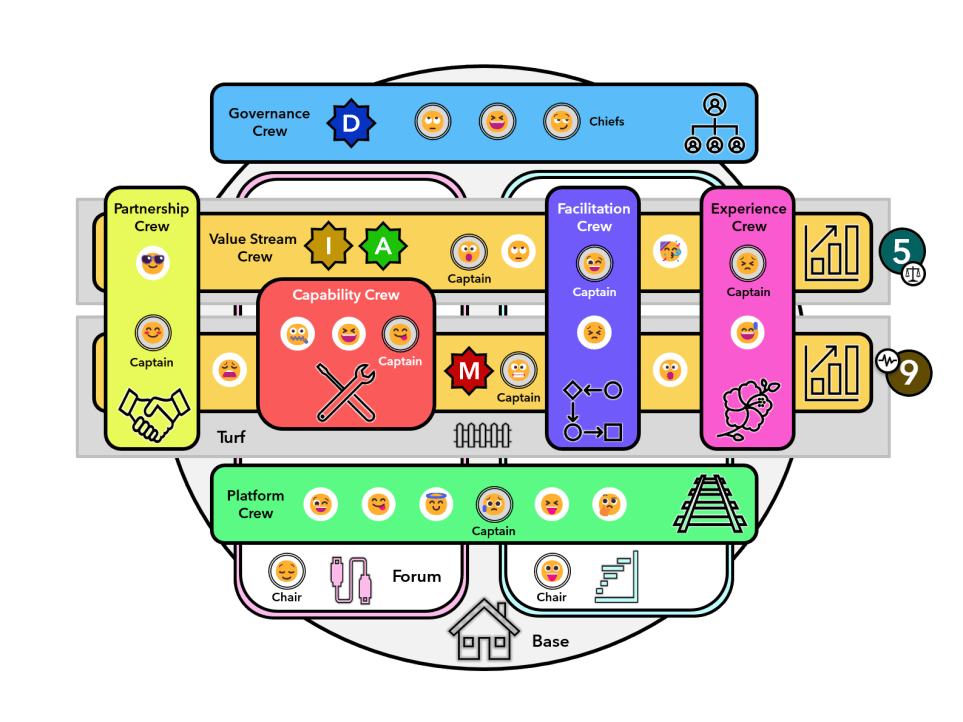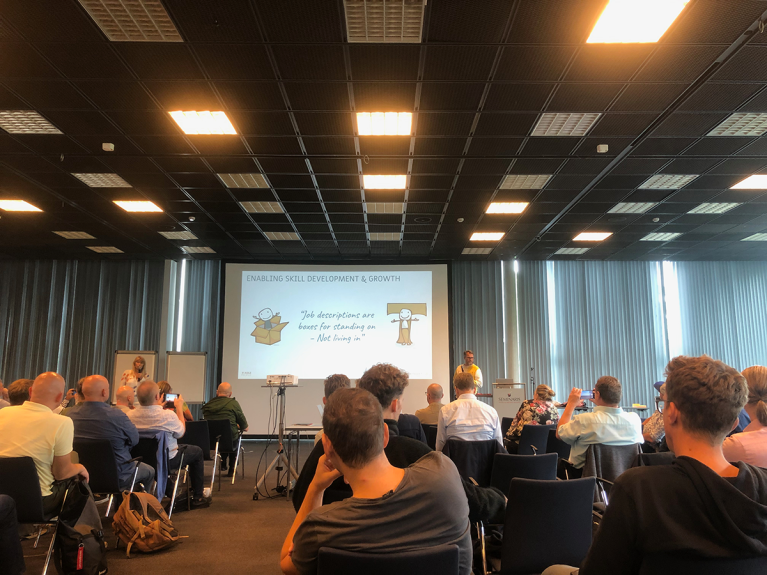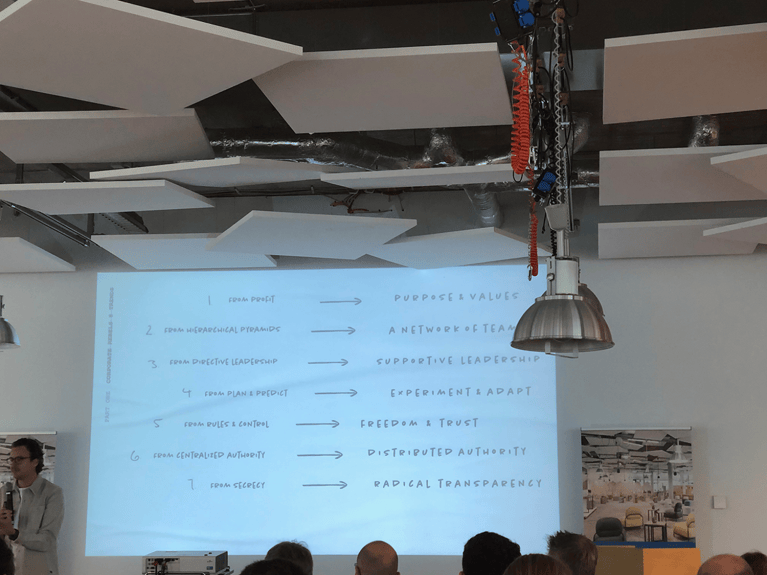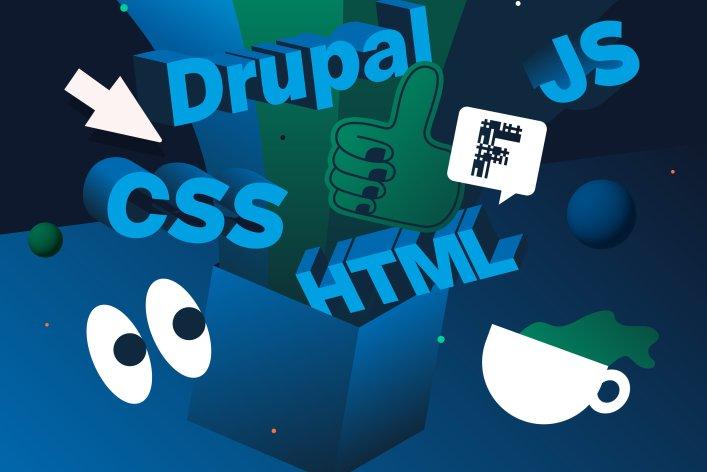October 11, 2022
Takeaways from unFIXcon 2022
My impressions from taking part in the first conference about unFIX – a promising framework for organizational design from Jurgen Appelo.

Factorial has grown quite a bit within the last two years. As I write this, we have now scaled from 35 to almost 60 people with many different roles within our company.
With that comes the need for us to find internal structures that foster the growth and development of our organization while minimizing the necessary coordination overhead. We have been experimenting with some of the Management 3.0 Practices by Jurgen Appelo, so I was pretty intrigued when he announced the draft of a new organizational framework: unFIX. Therefore, I joined the first unFIX conference in Berlin this year.
Day 1
Keynote: Versatile Organization Design with the unFIX Model
By Jurgen Appelo

Jurgen made an excellent introduction to what unfix is and isn’t. Right now, I understand it as a framework for organizational design that consists of patterns and models that can be combined to create an individual and adaptable organization. However, he also made it clear that he is standing on the shoulders of giants, referencing concepts from „Team Topologies“ and „Dynamic Reteaming“ and many more.
When should you integrate roles in the same team – and when should you separate them?
By Nicolay Worren

While everyone is talking about the cross-functional team at the center of value creation nowadays, Nicolay provided insights on an aspect that may not find that much attention: When to not integrate roles in the same team or unit. And he had the research and examples to back it up. For example, when both functions are needed within the organization, but their goals can’t be aligned, e.g., one function is enabling while the other is constraining, the performance of the team/unit gets worse. He also presented a fascinating software that analyses organizational communication patterns and can recommend optimal team slicing.
AGILE PEOPLE COACH – an alternative career for HR and managers in the future of work
By Pia-Maria Thorén

Pia and Daniel gave an inspiring talk about what they consider broken with current HR structures and approaches. They proposed an alternative role design, the Agile People Coach, which transforms HR from a controlling function to enabling function based on the needs of the people within an organization.
unFIXed – How unFIX can help non-software-product companies define their structures for self-organization and agility and continuously adapt.
By David Cummins, Andreas Ollmann

David and Andreas showcased the organizational changes within the Ministry group over the years using multiple visualizations using the unfix Miro template. Very insightful and relatable.
Distance Leadership
By Lisette Sutherland

Lisette held an incredibly engaging and funny talk about hybrid work, touching on many of the challenges that come with it and solutions and ideas on how organizations can overcome them. So in that sense: „When you return to the office, don’t return to the past!“
Untap your potential to create valuable products with Fluid Scrum Teams
By Willem-Jan Ageling

Willem-Jan presented an interesting case: You have a large group of people (~50) that is too big for optimal team coordination. So they self-organize in dynamic sub-teams around multiple sprint goals during spring planning.
Day2
Keynote: How to make radically decentralized organizations work
By Pim de Morree / Corporate Rebels

The second keynote was presented by Pim. He gave many insights from the progressive organizations he and Joost have been visiting worldwide. I particularly found the case study from NER group interesting.
Leading with Tight-Loose-Tight
By Susanne Ringen
According to Spiral Dynamics, one of the so-called „unhealthy“ expressions within a shared leadership culture can be conflict avoidance and exclusion of sensitive topics.
Tight-Loose-Tight is an agile leadership style developed by Rune Ulvnes in Norway that attempts to bridge that gap by providing clarity in the contextualization, allowing self-organization in the execution, and asking for transparency in the learning cycle.
I had an eye-opening group conversation with members from many different sectors, including German Bluechips and Insurance companies.
Competencies of position – careers in agile organizations
By Joachim Landow
Joachim gave an insightful overview of how he is transforming the employee development process at Hanseatic bank away from titles and towards competencies, including value-add, mentoring, and management recognition.
Organization Design for Fast Flow
By Kim Nena Duggen
Kim presented a real-world case study where she helped to restructure a sizeable organizational unit from a functional and constraining structure towards a value stream-aligned team structure of cross-functional teams. Also super interesting to see how organizational change on such a scale can happen. Kim modeled this around the Team Topologies system.
Summary
Thanks to Jurgen Appelo for coming up with unFIX, The Ministry Group for making the conference happen, and all the speakers and wonderful people I met over the two days in Berlin. I leave the first unFIXcon with vibrant thoughts, taking with me many inspiring concepts and ideas that I’m keen to bring to our organization, Factorial.
Source: A visualization of the unfix model – taken from https://unfix.work



